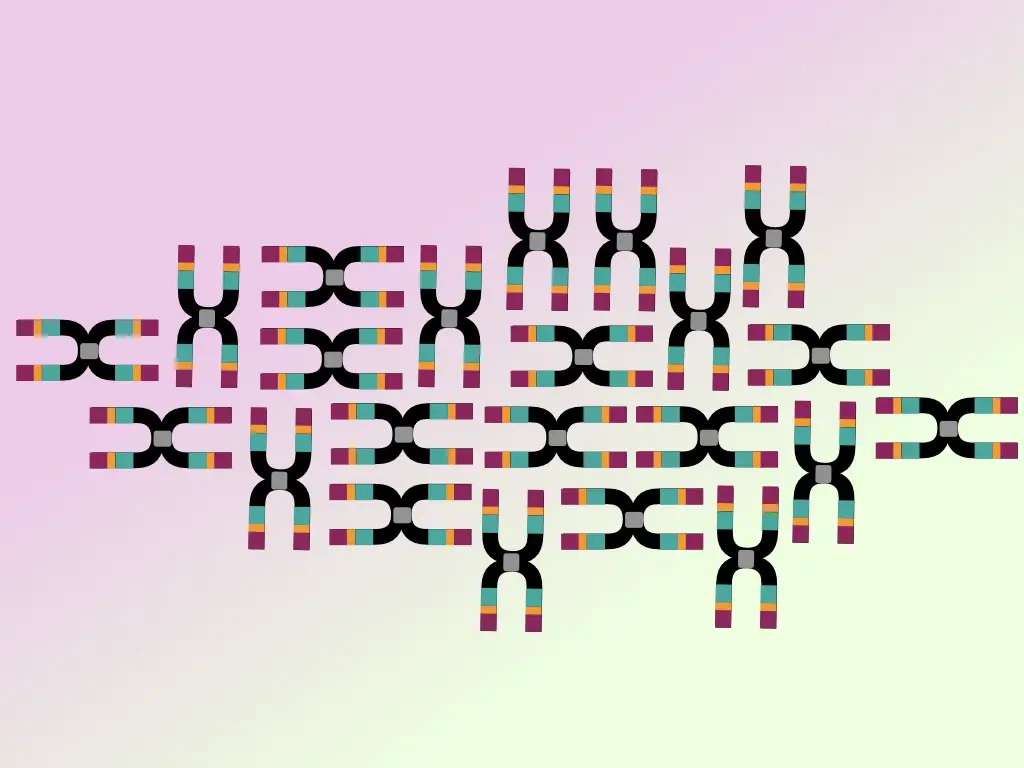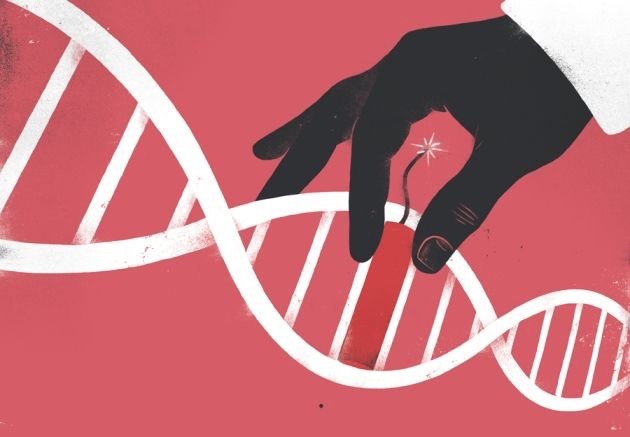Here is our honest review of Qiagen QIAXpert– a DNA quantification machine. Learn about the quantification principle, advantages and limitations of QIAgen QIAXpert.
Nucleic acid quantification is an important factor in achieving success during downstream processes. The higher the purity, the more amazing the results are! Two common quantification chemistries are spectrophotometry and fluorometry.
Nanodrop lite and Qubit are two popular DNA quantification machines that use spectrophotometry and fluorescent chemistry, respectively. However, Qiagen QIAXpert is also another competitor in this segment.
Qiagen QIAXpert is a spectroscopy-based nucleic acid quantification unit, designed and manufactured by Qiagen. In this article, I will review and give my honest opinion on working with Qiagen QIAXpert.
I and my team have years of experience working in a molecular genetic lab and on different instrumentations and technology. So we better know the strengths and limitations of each instrument or technology.
We will see what Qiagen QIAXpert offers us and what not! Stay tuned.
Read more: [Review] Comparison Between Qubit vs. Nanodrop Lite
Key Topics:
Qiagen QIAXpert Machine:
The Qiagen QIAXpert nucleic acid quantification machine is designed, developed and manufactured by Qiagen. It is a registered trademark of the company and can’t be used without their prior permission.
We are using the Qiagen QIAXpert name only to give our opinion on working on it. The sole purpose here is to educate students regarding this instrument.
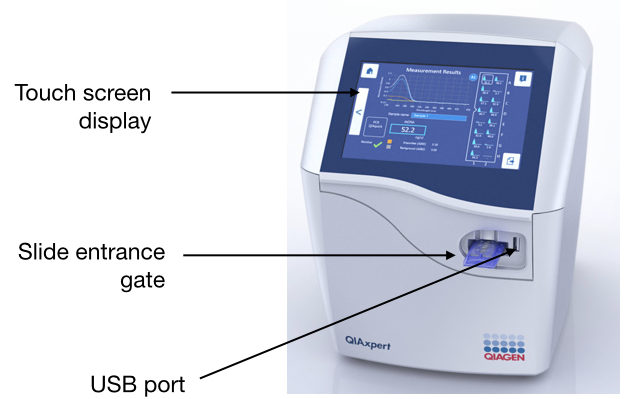
The Qiagen QIAXpert is a single-channel, UV-visible spectrophotometer. It can quantify DNA, RNA and proteins. The instrument comes in a single-color blue-silver combination. And made up of acrylic.
At the front, it has a touch screen, slide chamber, USB port and Qiagen branding. At the back, it has a power switch, IP interface and power plugin.
The machine runs on Qiagen’s own software. The results show an absorption graph, 260/280 ratio, 260/230 ratio, absorption at 260 nm and the concentration of DNA.
On another side of the screen, the software contains sample loading information. It shows the slide with the sample loaded in each well. When we click on a particular well on the screen, it will give us all the quantification information regarding that particular sample.
| Machine | Qiagen QIAXpert |
| Type | UV-visible polychromatic system |
| Principle | Spectroscopy |
| Light source | Xenon flashlight |
| Wavelength range | 230 to 750 nm |
| Throughput | 1 – 15 samples + a blank in a run |
| Time | 2 minutes |
| Data output | USB, TCP/IP or QR code |
| Sample quantity | 2µL |
| Concentration | 1.5 nG/µL to 2000 nG/µL (dsDNA) |
Principle of Qiagen QIAXpert:
As aforementioned, the instrument works on the principle of spectrophotometry. It is the fastest, accurate and sensitive quantification technique.
DNA absorbs UV light at 260 nm. As the UV light passes through the sample (at 260 nm) the amount of light absorbed by the DNA is directly proportional to the amount of DNA present in the sample. Thus, the higher the amount of light absorbed, the higher the DNA concentration.
In addition, by calculating the 260/280 nm ratio, the machine can also measure the purity of the nucleic acid as well. The stepwise process is explained here.
The pump transfers the samples from the QIAXpert slide to the micro cuvette. Absorption is measured at 260, 280 and 230 nm. The detector detects the absorbance and provides us quantification value.
Note that the integrated software uses an automated calculation to measure the purity and quantity. Using a single slide, we can quantify 15 samples within a run time of 2 minutes.
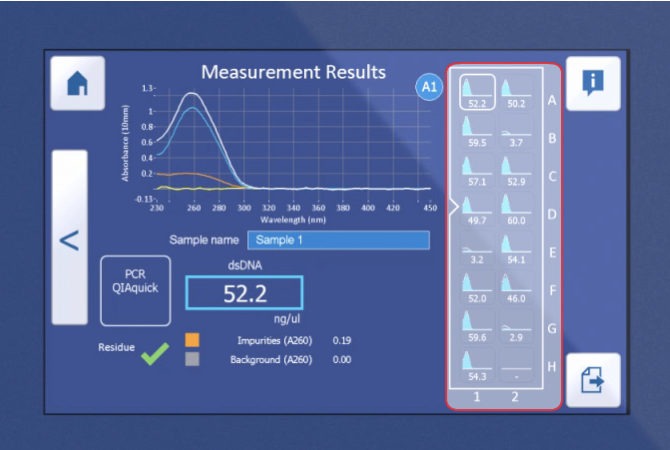
Interesting article: AMR genes primarily pass to closely related species.
QIAXpert slide
The QIAXpert slide is developed and designed by Qiagen. So it cannot be available to any other company or brand.
The Qiagen QIAxpert slide works on the unique concept of capillary forces. Once the sample is loaded into the well, it is immediately transferred into a small capillary. This protects against sample evaporation and cross-contamination. Furthermore, the sample-containing slide can be stored for 2 hours.
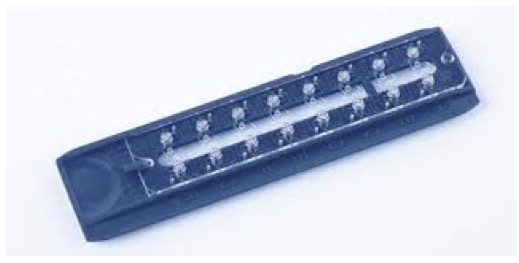
The slide is labeled from A to H, vertically and 1 and 2, horizontally. So for all 16 wells, we can add 15 samples and a blank in a single run. An extra three slides for pump calibration, wavelength calibration and position calibration have been provided with the machine as well.
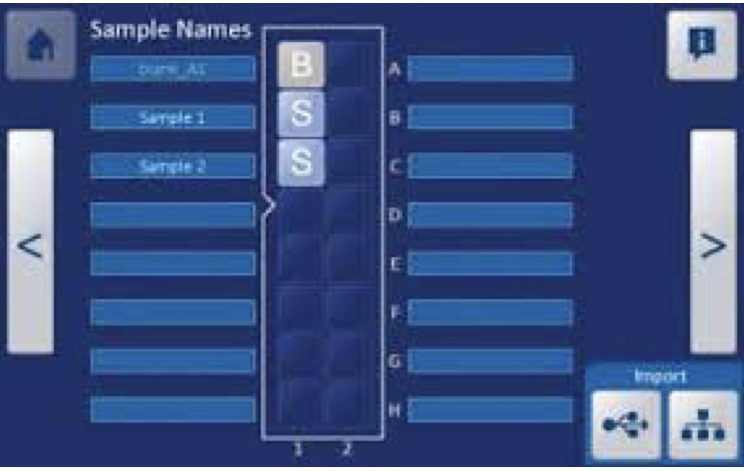
Advantages:
- The sample operation and preparation are handy and easy. It doesn’t need any fluorescent dye.
- It’s a high throughput method that can analyze 15 samples in a single run.
- It requires fewer samples compared to traditional spectroscopy.
- The chances of error are less.
- The built quality and design of the machine and slides are awesome with the best plastic quality.
- The data can be transferred through the USB flash drive into a readable format (.html, .txt, .bin).
Limitations:
In my opinion, the machine isn’t the first choice for experts, despite having high throughput, accuracy and amazing design. Here are some of the reasons why.
- Qiagen is a pioneer in designing high-end accurate instruments but an additional requirement of slides, every time, makes it a costly option. Slides are actually costly.
- The slide isn’t reusable, so after every 16 runs, the slide is useless which increases the biowaste load.
- In addition, the machine itself is costly in comparison with other instruments.
- Slides insertion is like– we are using an ATM machine. The noise also felt so weird.
- The primary constraint of the current instrument lies in its sampling requirement, as it necessitates a 2 µL sample size, slightly exceeding the sample volume needed for the NanoDrop Lite.
- While using the instrument, we observed that the slide might accidentally fall to the floor, causing us to lose our samples. This has happened to us before.
- Every time we have to set a blank for every slide. This occupies one additional well that increases the running cost.
- Much like Nanodrop lite, it can quantify dsDNA only and not ssDNA fragments.
A blank is a solution in which the DNA is dissolved. If it is dissolved in a TE buffer, use the TE buffer as a blank.
User guidelines:
Install the machine as per the manufacturer’s protocol and calibrate using a calibration guide of Qiagen or call the Qiagen expert for installation and calibration.
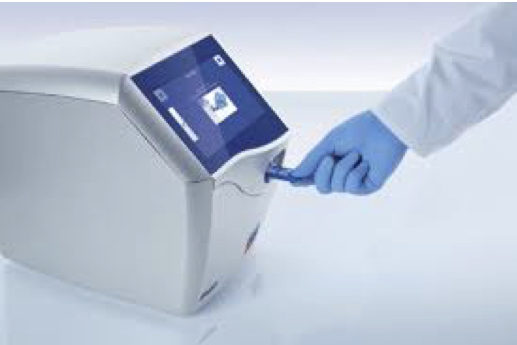
Now load samples in a sequence of A2- B1-B2-C1 up to H2, and note it down in the record book. Always follow this loading pattern. A1 is our blank.
Now to run the operation, we have to create a user in the software. Follow these steps: measure> select user> insert slide> label slide> select dsDNA into the quantification section.
After completion of the process, the slide will come out of the slide gate automatically and the result will be displayed as shown in the figure.
Wrapping up:
I honestly felt that the Qiagen QIAXpert is a slightly complicated and costly instrument in comparison with other high-end instruments available in the same niche. Nonetheless, the throughput and accuracy are top-notch.
QIAXpert is not recommended for only a couple of samples. But if your lab has a higher sample load, you can definitely go with this option. The reason is, it can process 15 samples in a single run.
Having a higher workload and to prevent contamination, you can choose QIAXpert. In addition, it has the additional benefit of purity assessment which isn’t possible with Qubit.
Conclusively, thumbs up, if you have a higher sample load, and need high accuracy, sensitivity and throughput. Moreover, if you are looking for a cost-effective option, you can go with Qubit or even conventional agarose gel electrophoresis.
The article was written by: Tushar Chauhan
The article reviewed by: Tushar Kachhadiya
